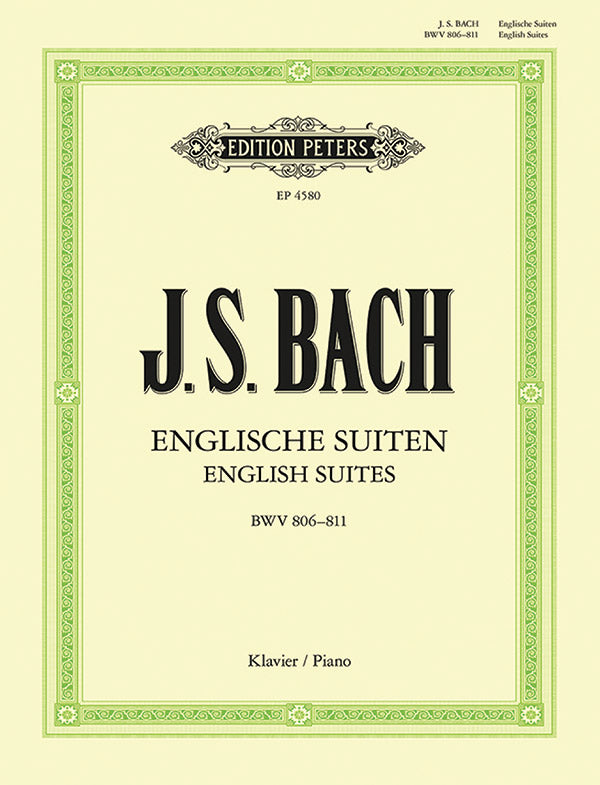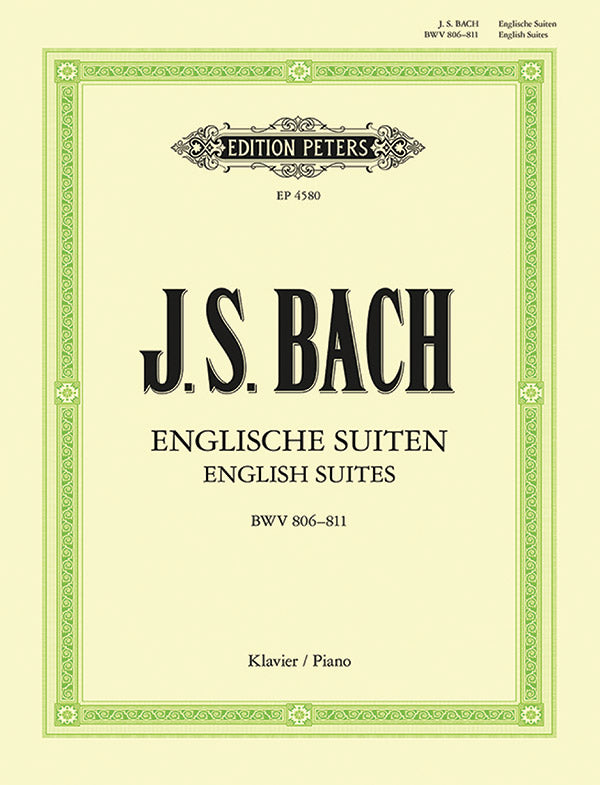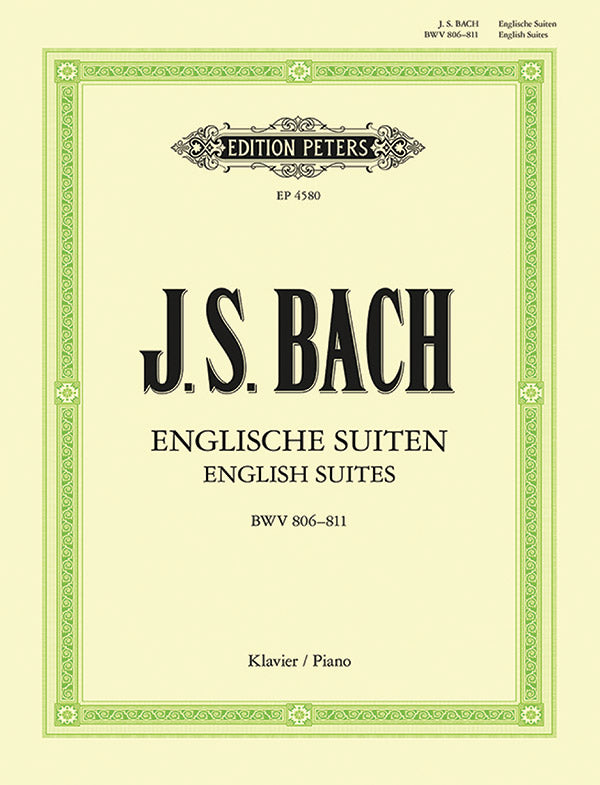Johann Sebastian Bach
Bach: English Suites BWV 806-811
- Composer: Johann Sebastian Bach (1685-1750)
- Editor: Alfred Kreutz
- Instrumentation: Piano
- ISMN:
- Size: 9.1 x 11.8 inches
- Pages: 132
Description
The full collection of Bach's 6 English Suites (BWV 806-811), edited by Alfred Kreutz. The title "English Suites" is generally considered to derive from the fact that they are supposed to have been written by Bach for an English nobleman. This information is backed solely by the remark "Fait pour les Anglois" on the title page of the in A Major Suite on of the sources. However, if Bach had really composed the suites 'to order' more details of the commission would probably have survived - as in the case of the Goldberg Variations. It is in fact more probable that amongst Bach's pupils and friends the Suites became known as "English" to differentiate them from the shorter French Suites and perhaps because they vaguely followed some musical styles from England. Indeed their design does show a resemblance to Handel's Suites, published in London. Furthermore, E. Dannenreuther, author of Musical Ornamentation Volume 1 (1893) indicated just how much the "English Suites" resemble those of Six Suites de Clevcin by Ch, Dieupart - who was active in London from 1707 to his death. in fact, Bach knew the Suites of Dieupart, and actually copied them with his own hand.
Works:
- English Suite No. 1 in A Major, BWV 806
- English Suite No. 2 in A Minor, BWV 807
- English Suite No. 3 in G Minor, BWV 808
- English Suite No. 4 in F Major, BWV 809
- English Suite No. 5 in E Minor, BWV 810
- English Suite No. 6 in D Minor, BWV 811
Publishers use a lot of words to describe what they sell, and we know it can be confusing. We've tried to be as clear as possible to make sure you get exactly what you are looking for. Below are descriptions of the terms that we use to describe the various formats that music often comes in.
Choral Score
A score for vocalists that only contains the vocal lines. The instrumental parts are not there for reference. Generally, cheaper than a vocal score and requires multiple copies for purchase.
Facsimile
Reproductions of the original hand-written scores from the composer.
Full Score
For ensemble music, this indicates that the edition contains all parts on a single system (there are not separate parts for each player). In larger ensembles, this is for the conductor.
Hardcover
Hardbound. Generally either linen-covered or half-leather.
Orchestral Parts
Similar to a wind set, this is a collection of parts. In the case of strings, the numbers listed are the number of copies included, though generally these are available individually (often with minimum quantities required).
Paperback
When publishers offer multiple bindings (e.g. hardcover) or study scores, this is the "standard" version. If you're planning to play the music, this is probably what you want.
Performance / Playing Score
A score of the music containing all parts on one system, intended for players to share. There are not separate parts for each player.
Set of Parts
For ensemble music, this indicates that there are separate individual parts for each player.
Solo Part with Piano Reduction
For solo pieces with orchestra, this is a version that contains a piano reduction of the orchestra parts. For piano pieces, two copies are typically needed for performance.
Study Score
A small (think choral size) copy of the complete score meant for studying, and not playing. They make great add-ons when learning concertos and small chamber works.
Vocal Score
A score prepared for vocalists that includes the piano/organ part or a reduction of the instrumental parts.
Wind Set
For orchestral music, this is a collection of wind and percussion parts. The specific quantities of each instrument are notated.
With Audio
In addition to the printed music, the edition contains recordings of the pieces. This may be an included CD, or access to files on the internet.
With / Without Fingering (Markings)
Some publishers prepare two copies - a pure Urtext edition that includes no fingering (or bowing) suggestions and a lightly edited version that includes a minimal number of editorial markings.




